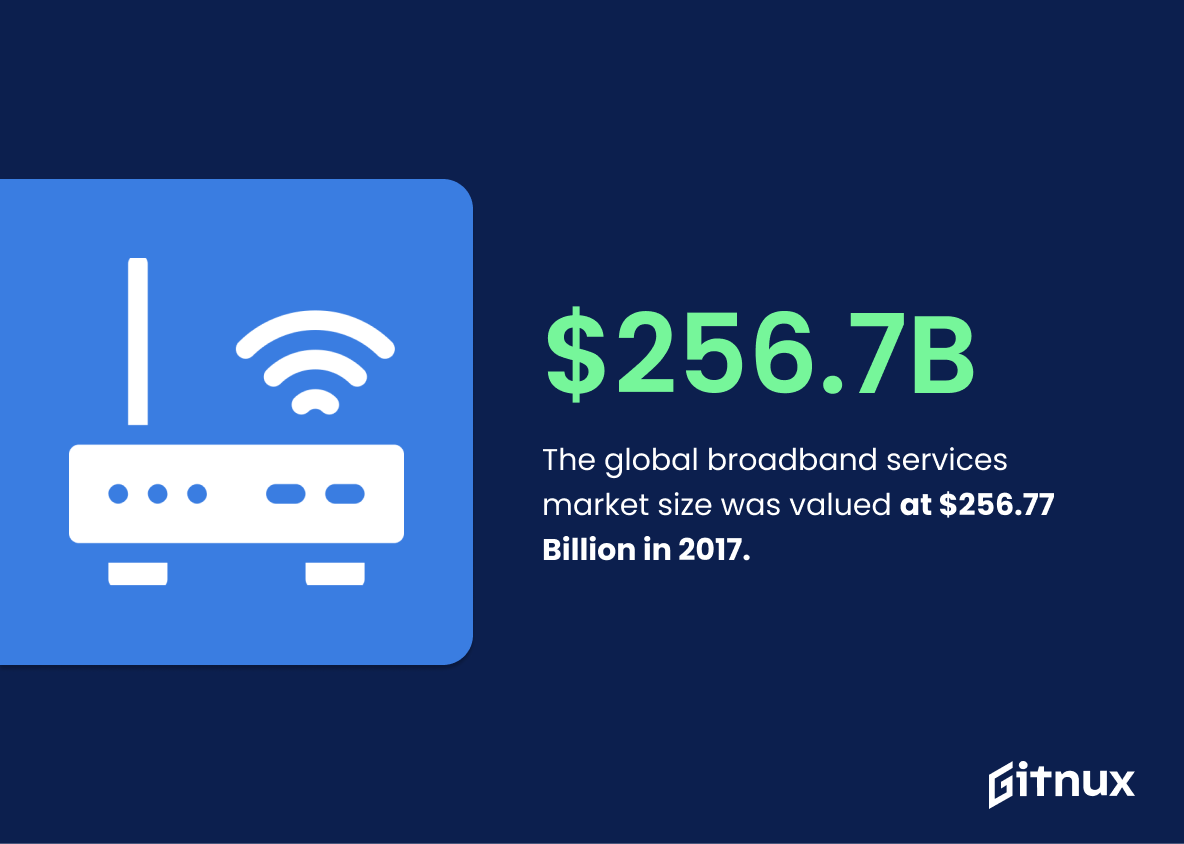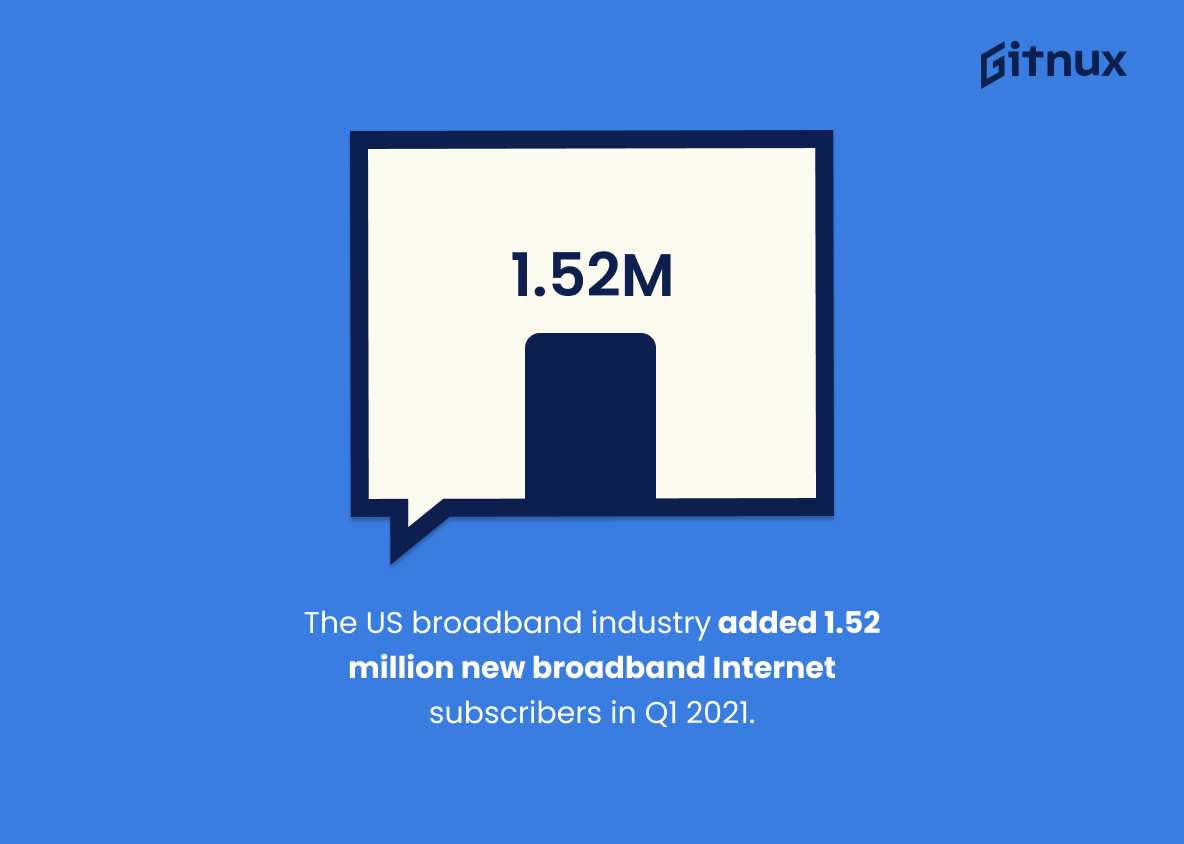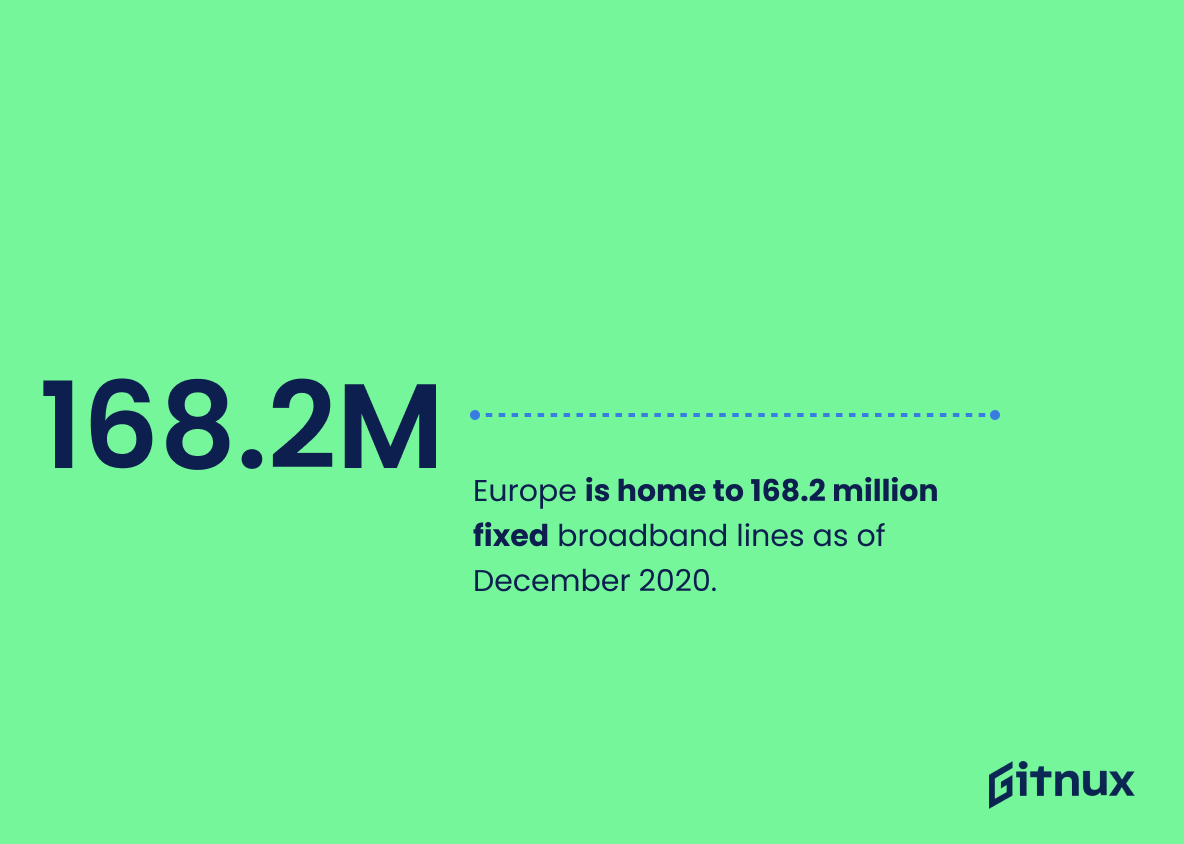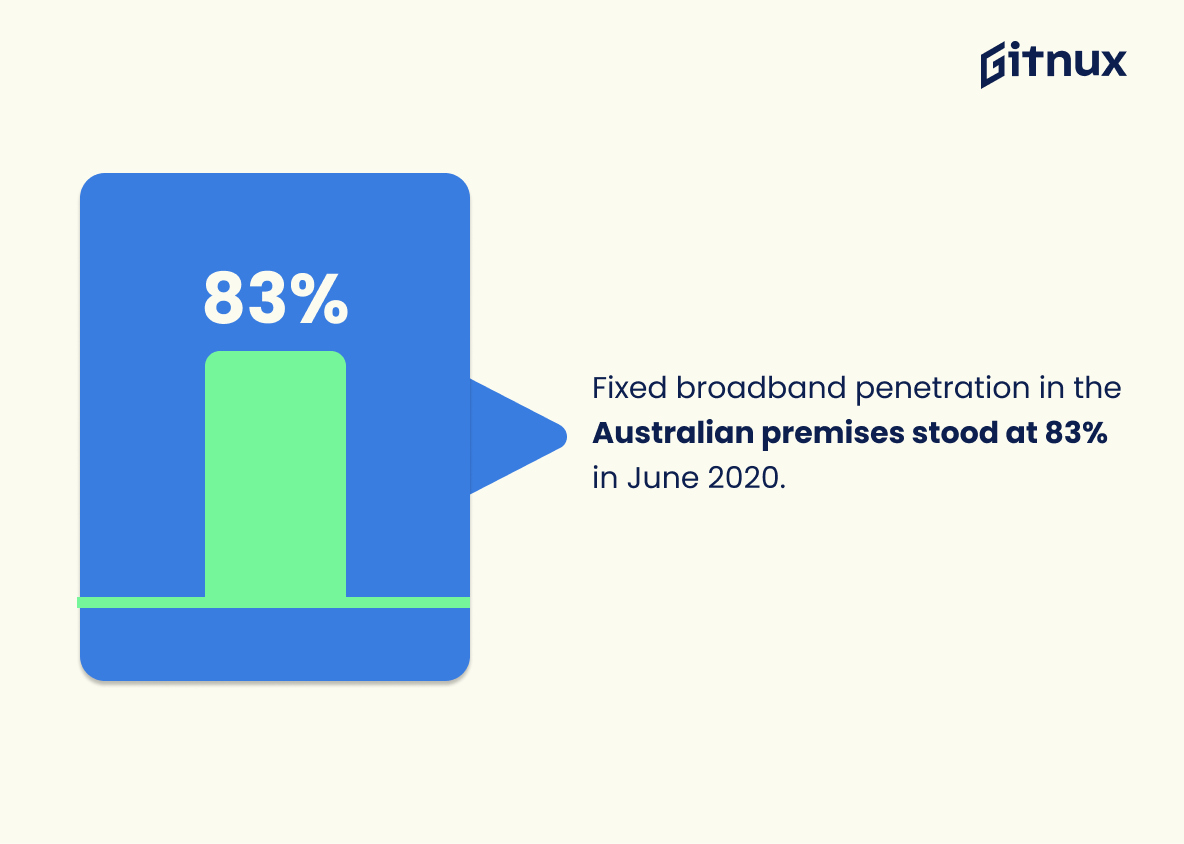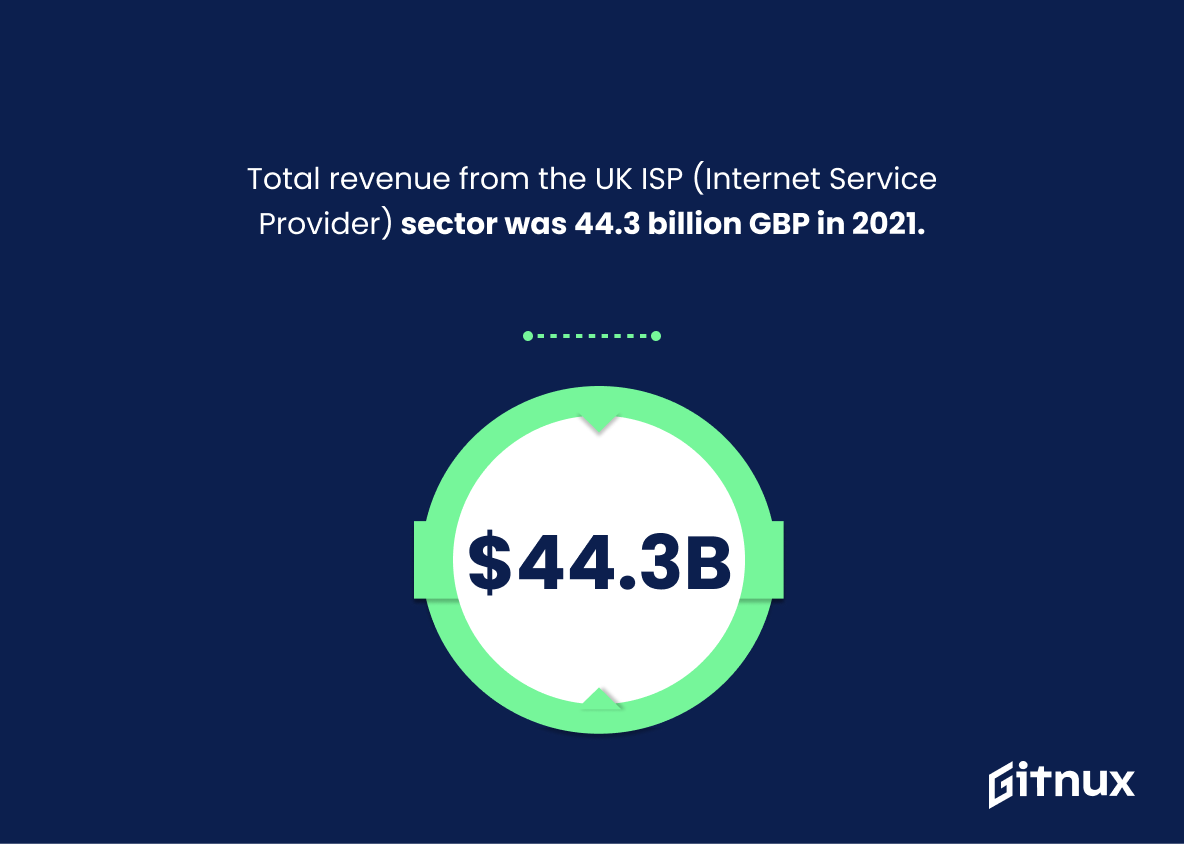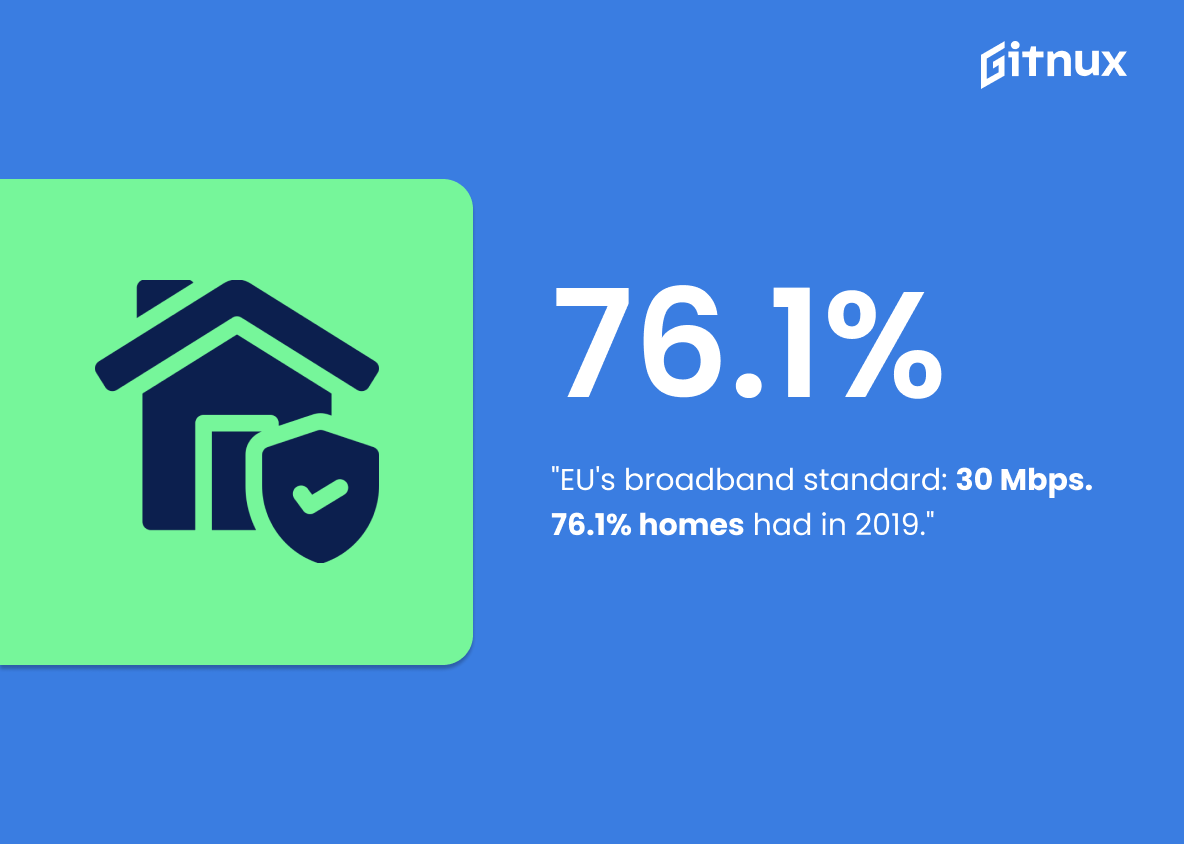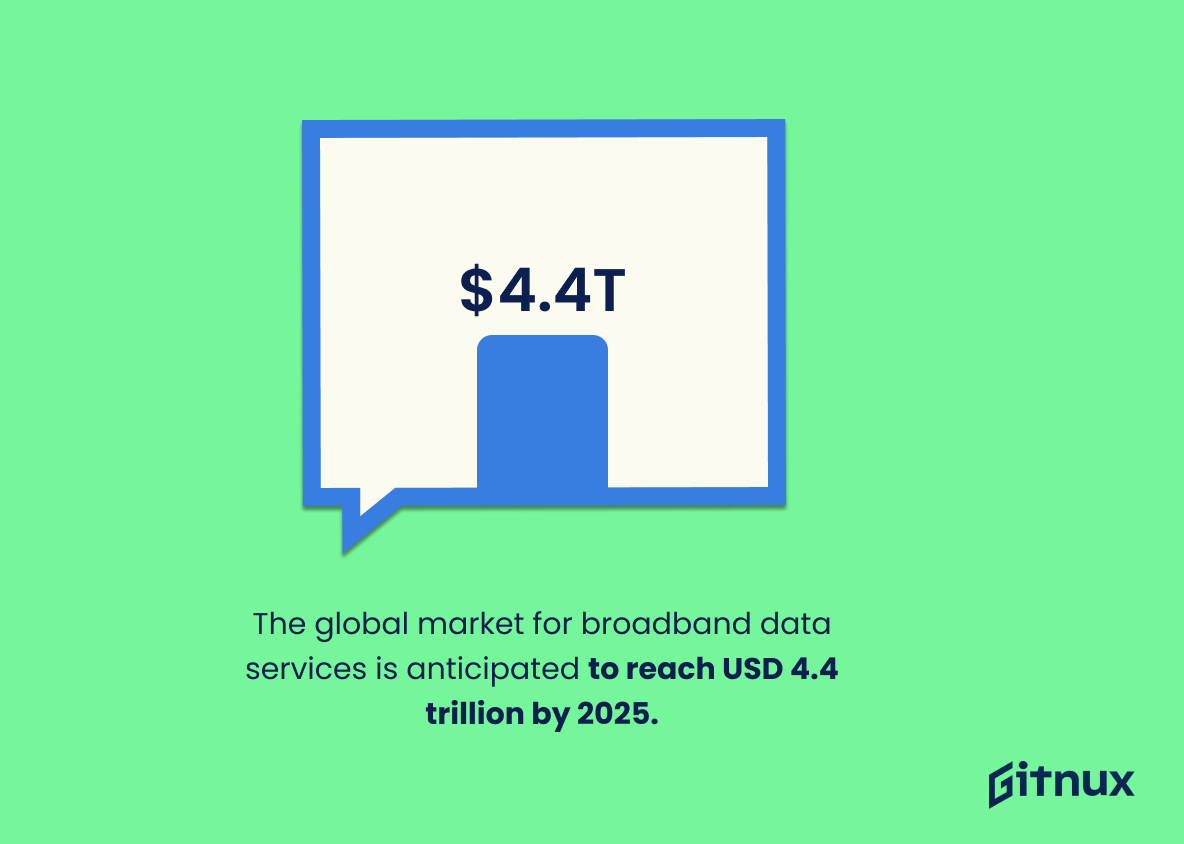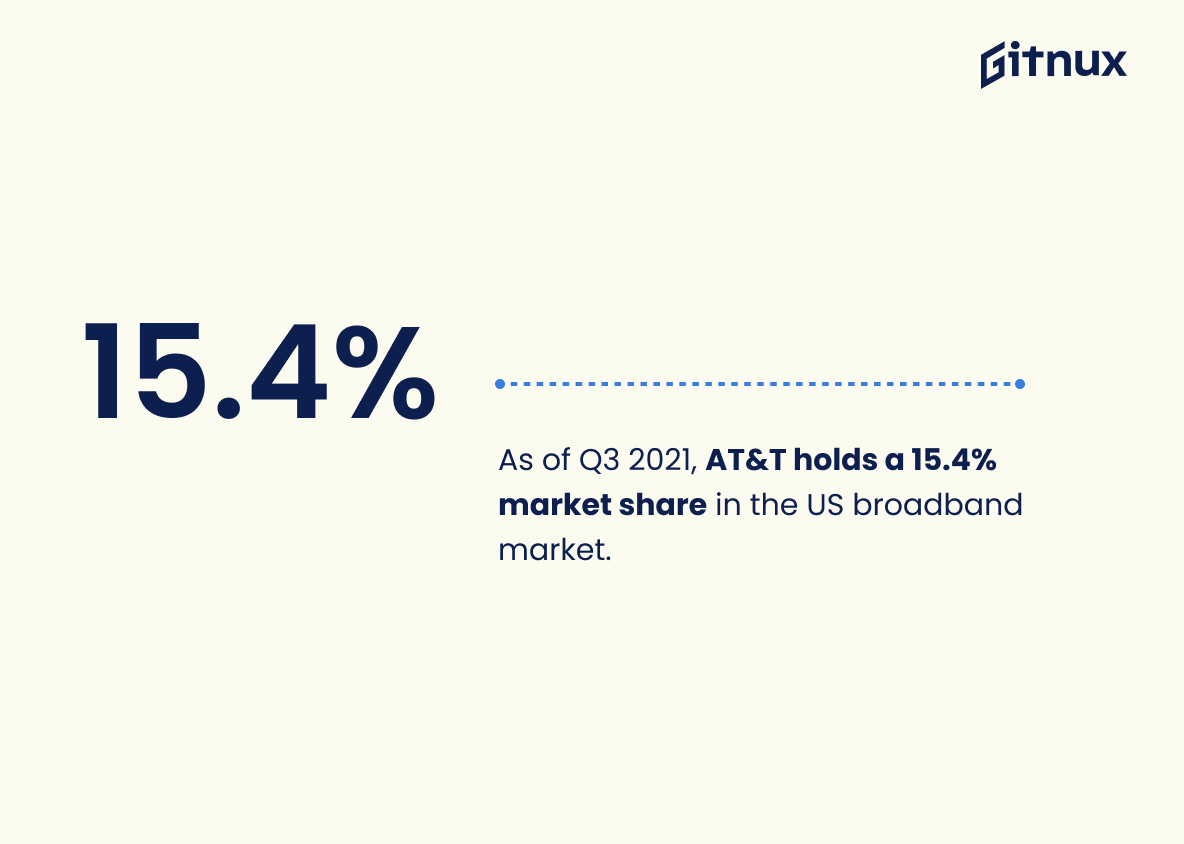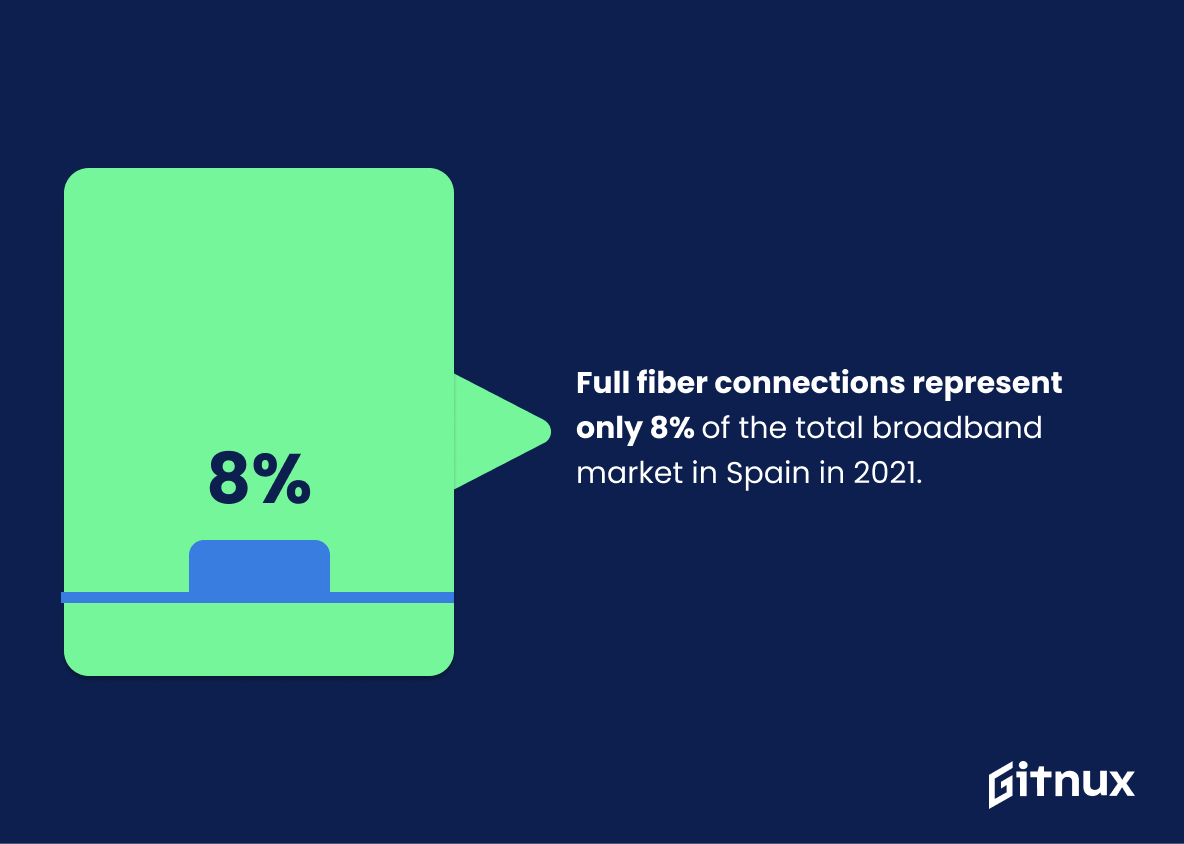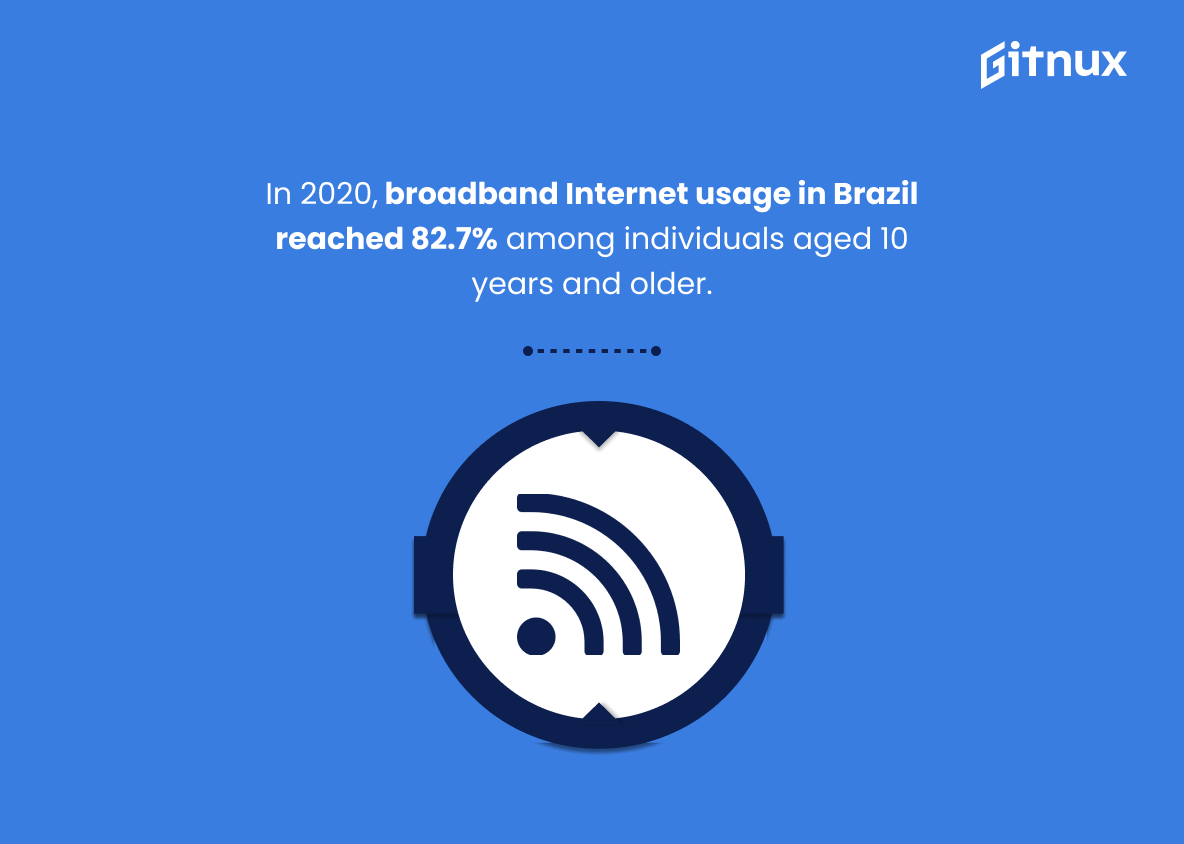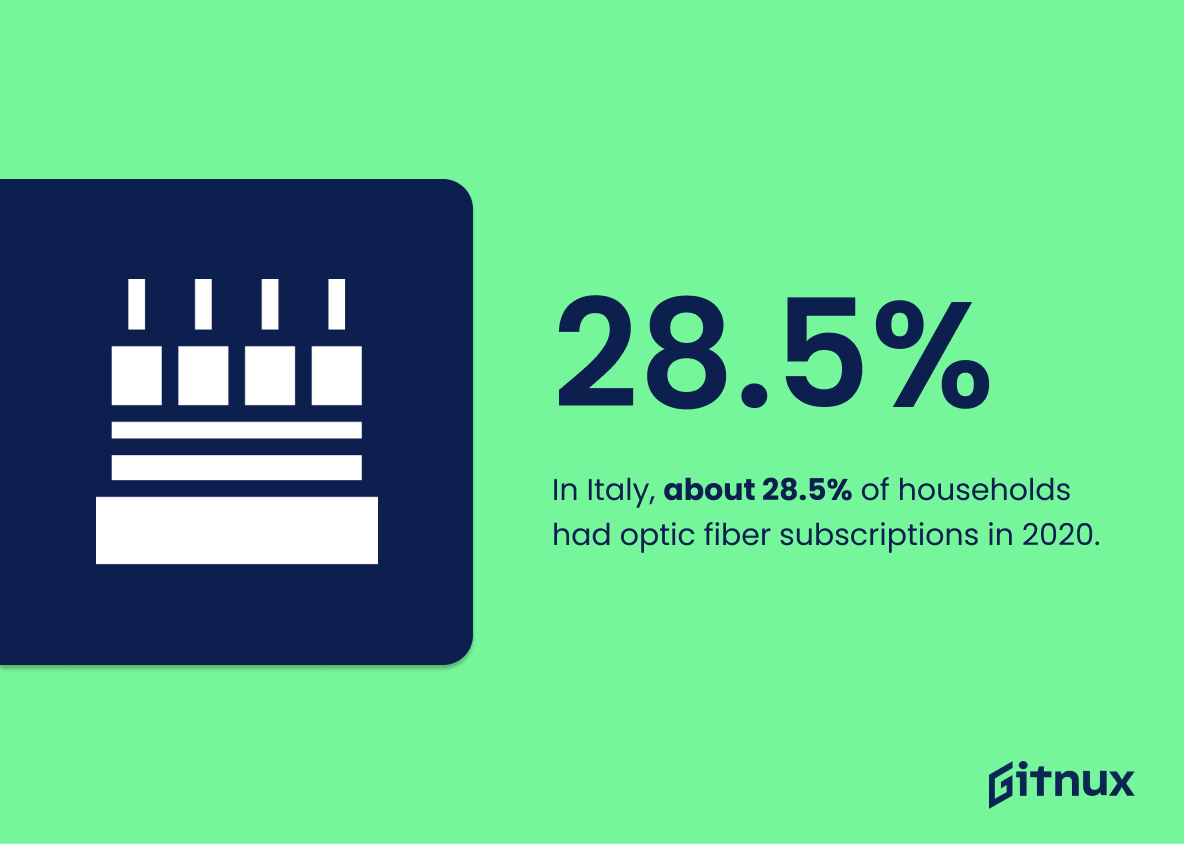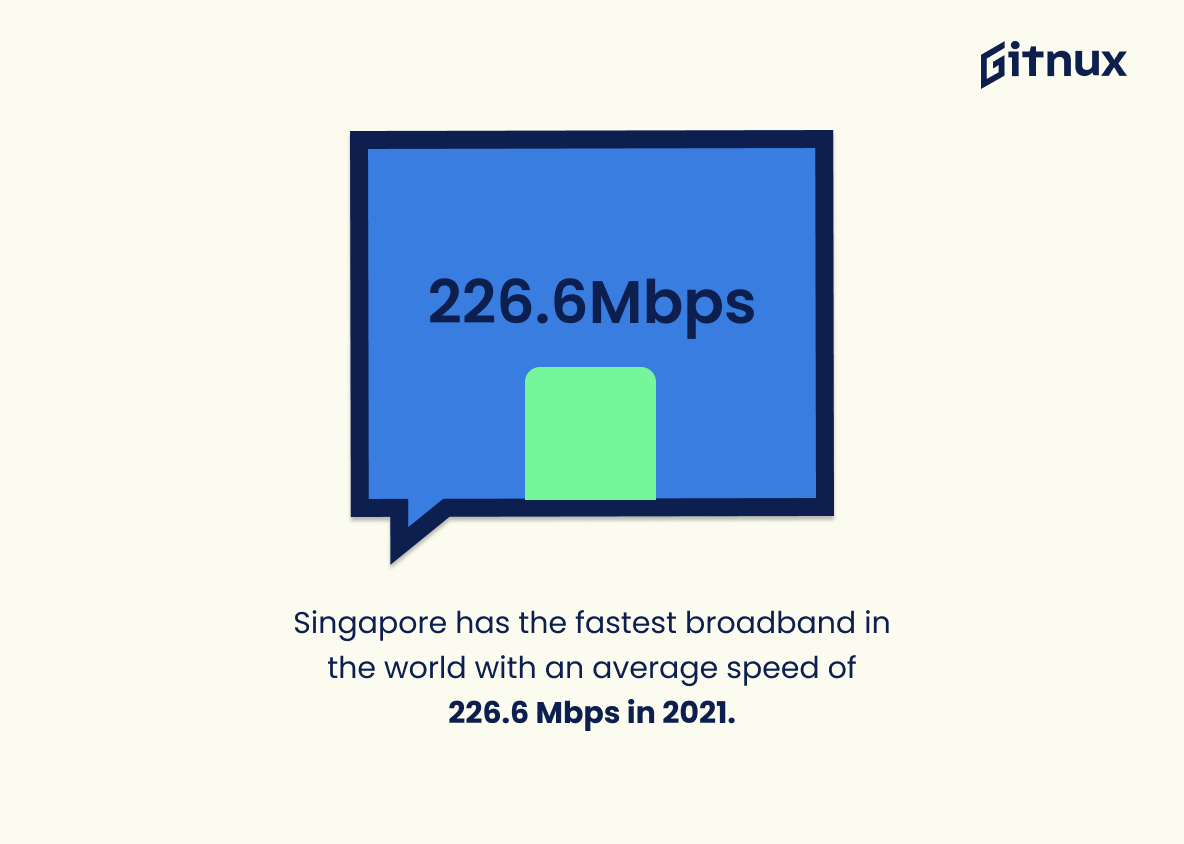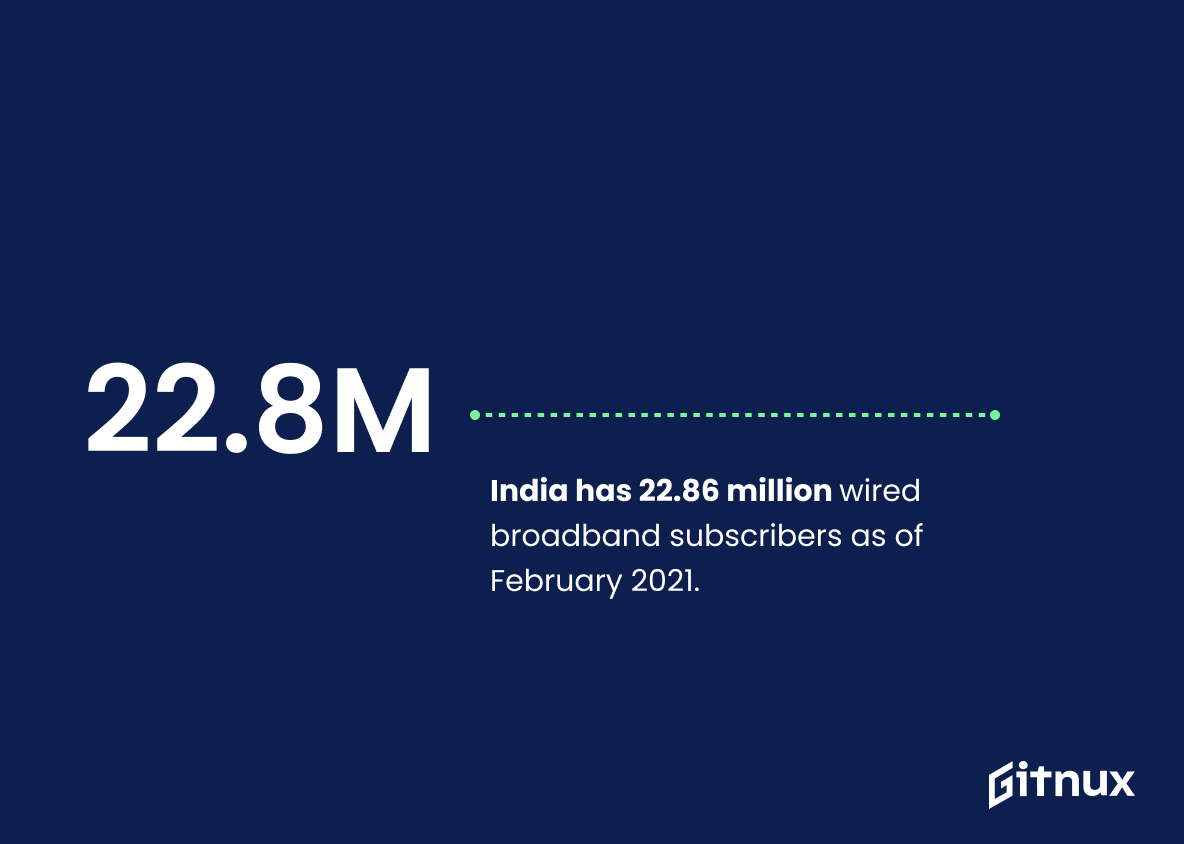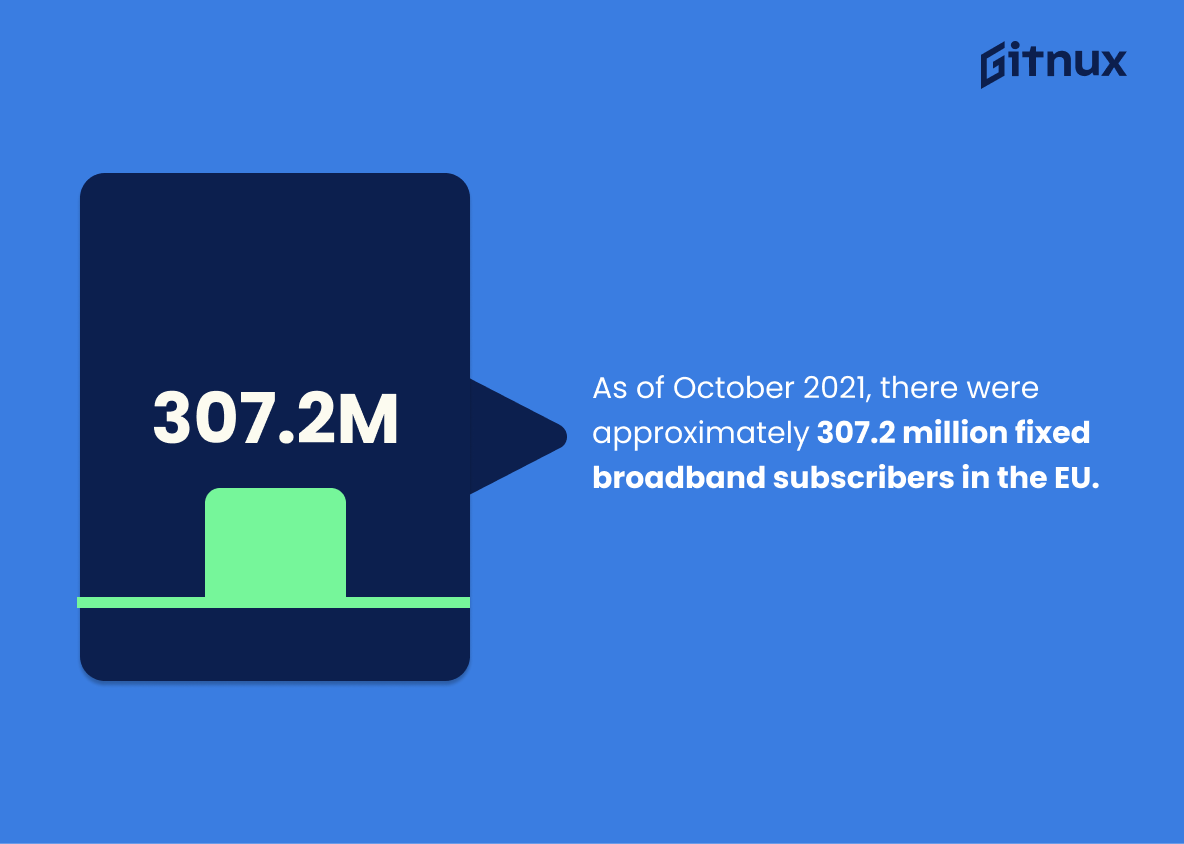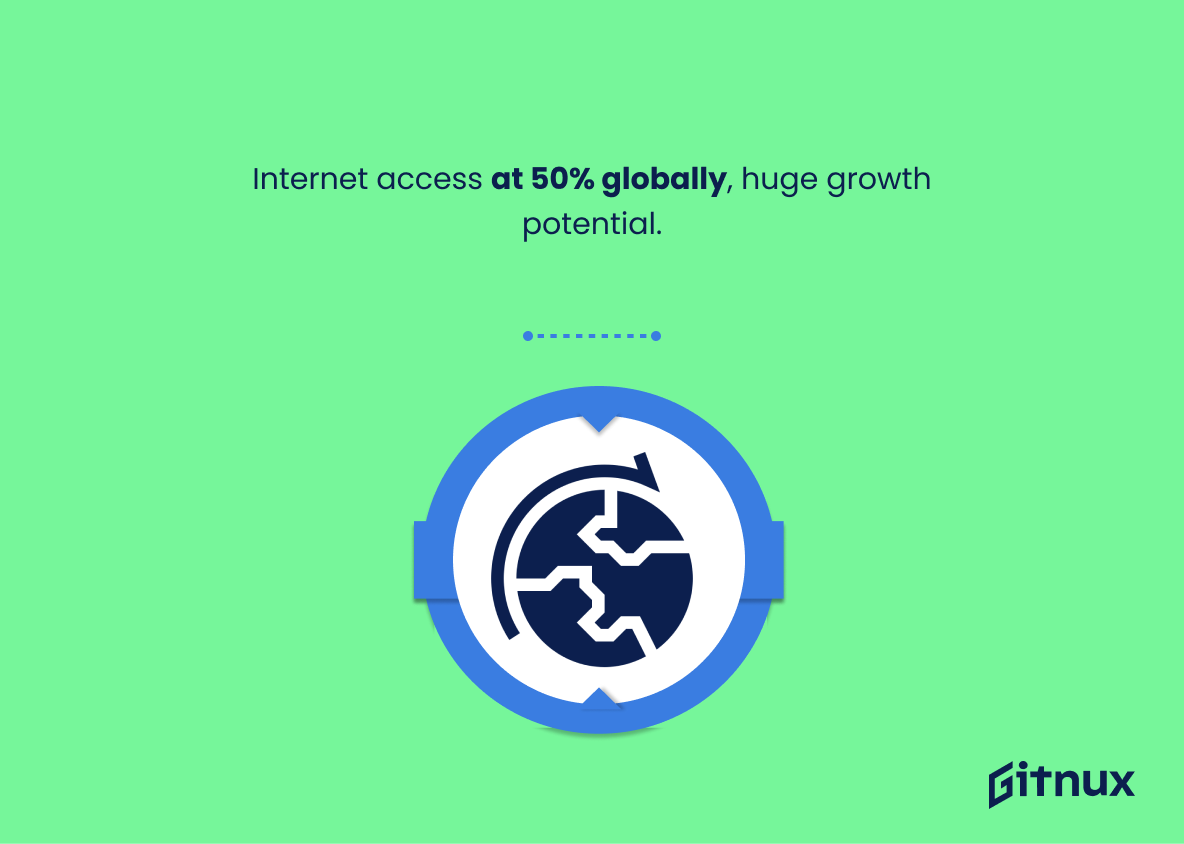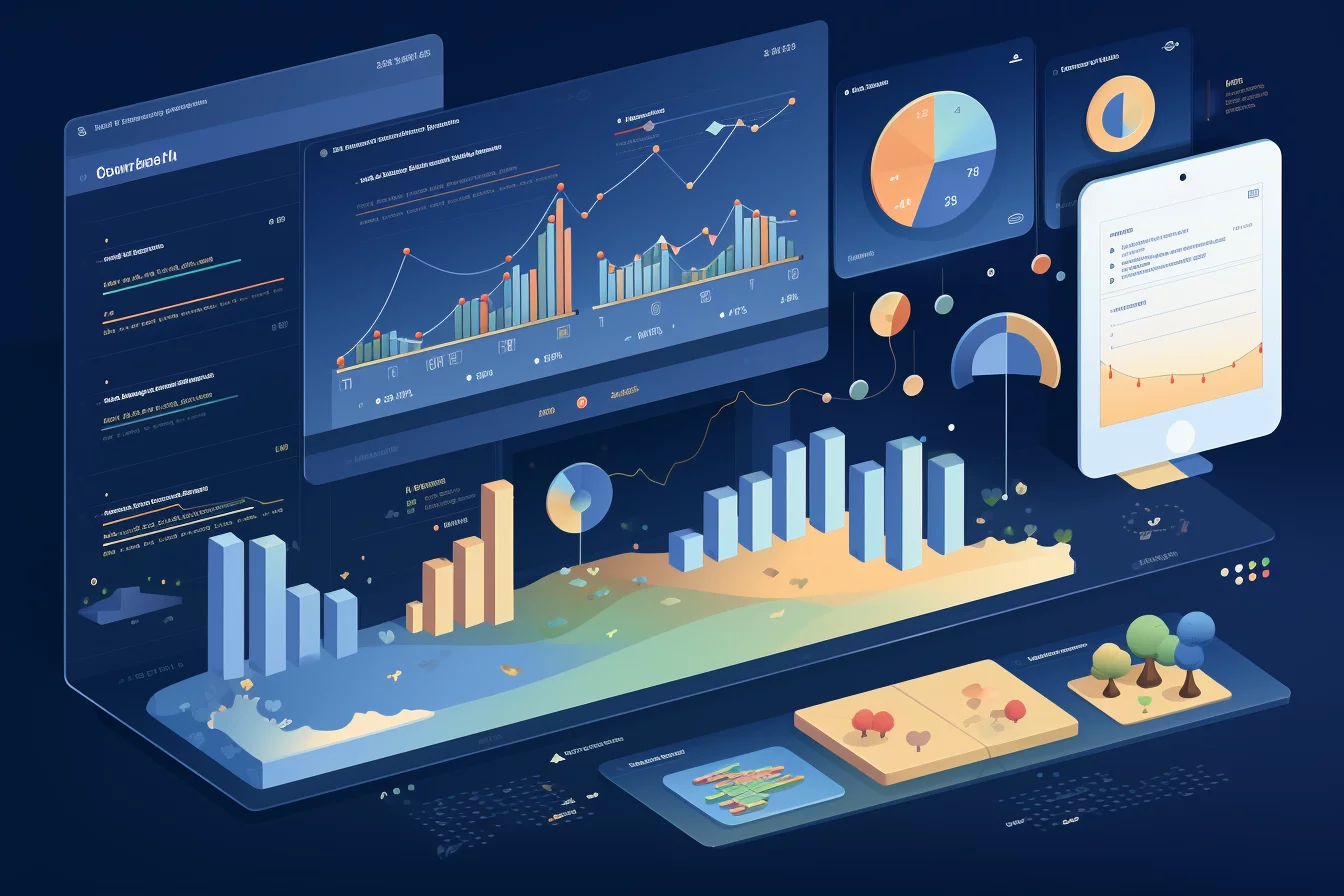In our continuously advancing digital age, the broadband industry has become the backbone supporting every stride of progress. With applications spanning across sectors from communication and education to entertainment, healthcare, and beyond, understanding the broadband industry’s dynamics has never been more critical.
This blog post dives deep into the ever-evolving sphere of the broadband industry, decrypting the cryptic realm of data with comprehensive statistics. We’ll explore substantial trends shaping the industry’s trajectory, study its growth patterns, and evaluate its potential impact on our future. Let’s embark on an enlightening expedition into the fascinating world of broadband industry statistics.
The Latest Broadband Industry Statistics Unveiled
The global broadband services market size was valued at $256.77 Billion in 2017.
Highlighting the impressive valuation of the global broadband services market at $256.77 billion in 2017 not only serves as a testament to the sector’s remarkable economic magnitude, but also underscores the pivotal role broadband industry plays on an international scale.
This prodigious figure sheds light on the significant traction the broadband industry has gained, helping readers understand the dynamism and growth trajectory of this sector. It becomes clear through this statistic that any fluctuations or trends in this industry carry substantial weight, potentially creating ripple effects across interconnected industries and markets.
The US broadband industry added 1.52 million new broadband Internet subscribers in Q1 2021.
The pulsating heartbeat of the US broadband industry skipped a victory beat in Q1 2021 with the addition of 1.52 million new broadband Internet subscribers. This metric glimmers with substantial weight, illuminating industry performance, financial health, and growth dynamics.
Cast against the backdrop of the broadband industry, this figure symbolizes the industry’s evolving geography, a testament to its burgeoning demand, and a barometer of its potential market space. This enlightening statistic, therefore, sits as the crown jewel of our blog post, drawing a detailed picture of the Broadband Industry Statistics in the US.
Europe is home to 168.2 million fixed broadband lines as of December 2020.
Illuminating the digital landscapes of the continent, the presence of 168.2 million fixed broadband lines in Europe as of December 2020, truly underlines the magnitude of its broadband industry. This staggering figure serves as a conduit for understanding the sheer scale of the industry while providing a focal point to dissect market trends, penetration rates, and areas of development.
With this, we gain insight into the firepower of broadband infrastructure, paving the way into the deep recesses of Europe’s embrace of connectivity and digital innovation. Such facts, in a blog focused on broadband industry statistics, certainly wave the flag for Europe’s pivotal role in global telecommunications landscape.
The Asia-Pacific region is also projected to witness a growth rate of 9.8% in the broadband internet services market between 2020-2027.
Drawing attention to the forecasted upsurge in the Asia-Pacific region’s broadband internet services market offers an insightful perspective. It predetermines a remarkable pace of progress, underscoring the immense potential that this market reserves for future years.
This promising figure of a 9.8% growth rate from 2020 to 2027 speaks volumes about not only the growing acceptance and penetration of broadband services but also reaffirms the region’s position as a fruitful ground for investors and businesses in the industry. Hence, this statistic carves out an essential narrative in a broadband industry-focused blog, showcasing the growth trajectory and expansion canvas mapped out for this region.
Fixed broadband penetration in the Australian premises stood at 83% in June 2020.
Peering into the statistic showing 83% fixed broadband penetration in Australian premises as of June 2020 offers riveting insights. It signals Australia’s impressive stride towards achieving ubiquitous internet connectivity, a critical component for modern societies and economies. This number can be regarded as a barometer, measuring the effectiveness of past policies and efforts aimed at expanding broadband access across the continent.
In the expansive landscape of broadband industry statistics, such figures unfurl a compelling narrative about national trends, consumer adoption, and the reach of digital services. These factors, in turn, guide industry stakeholders when strategizing potential service upgrades and future technological rollouts. This figure is, therefore, a critical arrow in the quiver for anyone seeking to fully understand or discuss the broadband industry in Australia.
As of 2020, China had the highest number of fixed broadband subscriptions at over 449 million.
Highlighting that China, as of 2020, registered over 449 million fixed broadband subscriptions is instrumental in painting a comprehensive picture of the global broadband industry. It illustrates the magnitude and pace of broadband proliferation in this digital era. This colossal figure not only emphasizes China’s dominance in the global broadband sector but also illuminates an enormous market potential that service providers could tap into.
Additionally, it presents a useful parameter for other countries to gauge and map their broadband growth trends, and innovate strategies to bolster digitization and connectivity in their respective regions. Furthermore, this information can serve as a crucial benchmark for international internet service providers and investors trying to penetrate or expand their footing in the ever-evolving broadband market.
About 79% of American households had a broadband internet subscription in 2019.
Painting a vivid picture, the statistic leaps out – nearly four out of every five American households had a broadband subscription in 2019. This dramatic figure plays a starring role in the narrative about the Broadband Industry, representing the underline melody to the symphony of growth and dominance in the digital age we are living. It informs us, subtly, of the intensified reliance households have on broadband for various necessities, from streaming content to work-from-home arrangements.
The breadth of coverage, as captured by this statistic, positions broadband providers on a pedestal, speaking volumes about their indispensability and growing market influence. Like an omnipresent force, broadband has permeated the American domestic fabric, and this statistic, in all its starkness, bears testament to that.
Comcast Corporation generated $56.6 billion in revenue from their cable communications (including broadband) in 2020.
In the realm of Broadband Industry Statistics, Comcast Corporation’s staggering revenue of $56.6 billion in 2020 from their cable communications and broadband plays a prominent role. This mammoth figure sheds light on Comcast’s impressive standing in the industry. Not only does it underscore the company’s vast market presence, but it also paints a vivid picture of the substantial turnover the broadband industry can offer.
By focusing on this statistic, readers can grasp the financial magnitude associated with running a leading broadband business, and understand the potential earnings of industry players. Besides, it’s a bright beacon, illuminating the overall promising landscape of the broadband sector, which is gaining more attention with surge in demand of high-speed connectivity in today’s digital age.
Total revenue from the UK ISP (Internet Service Provider) sector was 44.3 billion GBP in 2021.
Presenting the lofty figure of 44.3 billion GBP as the total revenue generated by the UK ISP sector in 2021, we shine a spotlight on the sheer magnitude and economic prowess of the Broadband Industry. This monetary testament of its scale, underpinned by the relentless pace of digitalization, not only nods at the sector’s profitability, but also indicates its critical role in supporting the digital economy.
Unveiling such an impressive revenue perspective further suggests a high demand and societal reliance on broadband services, underlining the essential nature of this industry. The sheer dimension of this sum reverberates the industry’s success & growth, influencing investment potential, employment opportunities, and technological advancements, all of which are crucial elements to discuss in any comprehensive discourse about the Broadband Industry Statistics.
The standard download speed for broadband in the EU is at least 30 Mbps, but only about 76.1% of homes had such access in 2019.
Presenting a striking glance at the digital landscape, the statistic highlights a notable chasm in the Broadband industry across the EU; while the standard broadband promises to pump data at 30 Mbps, nearly a quarter of households were yet unable to tap into this speed in 2019. Delving into these numbers unveils the state of connectivity, technological availability, and the industry’s challenge to bridge the digital divide.
Not only does it show gaps in infrastructure and service delivery, but it also proffers an intriguing narrative about how the Broadband industry’s promised potential isn’t matching the on-ground reality for all. This numeric snapshot thereby plants critical food for thought for policymakers, potential investors, and consumers alike – assessing the broadband industry’s current performance and future direction.
The global market for broadband data services is anticipated to reach USD 4.4 trillion by 2025.
Forecasting an explosive surge in the global broadband data services market to a staggering USD 4.4 trillion by 2025 provides a compelling narrative. It underlines a transformative phase for the broadband industry, subtly hinting at the enormous investment opportunities await. Not only does it spotlight the sector’s potential for exponential growth, but this forecast also underpins the evolving need for high speed internet connectivity across various sectors.
From e-commerce and remote working paradigms to edtech and telehealth, the projection underscores an undeniable cyber-revolution; one where broadband is the lifeline that keeps the heart of digital infrastructure beating. Thus, this statistic underscores the profound prominence and future potential of the broadband industry in the digital era.
As of Q3 2021, AT&T holds a 15.4% market share in the US broadband market.
Highlighting AT&T’s 15.4% market share in the US broadband scene as of Q3 2021 enriches our understanding of the broader industry landscape. It underscores AT&T’s pivotal role as a significant industry player, showcasing the level of influence they wield in shaping market trends and consumer choices. This data point further allows the reader to gauge competition levels within the industry, providing insights into the dynamic interplay between different service providers. As such, this statistic serves as an essential guidepost in navigating the complexities of the Broadband Industry.
Full fiber connections represent only 8% of the total broadband market in Spain in 2021.
Highlighting the meager 8% representation of full fiber connections in Spain’s broadband market in 2021 underscores the vast untapped potential for the industry’s expansion. It paints a vivid picture of a market brimming with opportunity, as there remains an immense 92% market that could transition to full fiber. This striking digit could act as a wake-up call for broadband providers to invest more aggressively in full fiber broadband, while simultaneously giving potential entrepreneurs a quantifiable measure of the substantial possibilities in this considerable yet-to-be-explored space in the Spanish broadband market.
In 2020, broadband Internet usage in Brazil reached 82.7% among individuals aged 10 years and older.
Highlighting the statistic that broadband Internet usage in Brazil rocketed to 82.7% among individuals aged 10 years and older in 2020 adds significant color to the discussion of broadband industry statistics. It underscores the vigorous expansion of digital infrastructure in emerging markets like Brazil and their rapid adoption among the populace, painting a promising picture of potential investment and growth opportunities for broadband service providers. In addition, this figure indicates a vast audience for bloggers, digital marketers, and online businesses, underscoring the ever-growing significance of the digital sphere.
In Italy, about 28.5% of households had optic fiber subscriptions in 2020.
This up-to-date figure contributes to painting a broader, global picture of the broadband industry, catapulting us into the reality of Italy in 2020. It allows us to delve into a nation where almost a third of households have turned over a new leaf, embracing optic fiber subscriptions. This significant percentage is indicative of the blossoming market in Italy, showing us how rapidly technology is evolving and being adopted.
Notably, it might also account for the potential room for growth in the industry on a European and global scale. In a realm such as broadband, where staying connected has become more essential than ever, grasping this statistic gives us valuable insight into the patterns of change in user preferences and technological adaptation.
Singapore has the fastest broadband in the world with an average speed of 226.6 Mbps in 2021.
When it comes to exploring the dynamism of the broadband industry, one cannot overlook the remarkable stride Singapore has made, boasting the world’s fastest broadband speed in 2021 with an impressive average of 226.6 Mbps. This detail serves as a testament to the stunning technological advancements, infrastructural development, and digital evolution that punctuates this city-state.
Holding this level of connectivity spotlight, this record-breaking speed not only positions Singapore as a global tech pacesetter, but also prompts further exploration into the policies, infrastructure, and strategies which helped them attain such an achievement. Moreover, it sets a tangible benchmark for other nations, inciting a competitive drive and acting as a catalyst for overall global improvement in broadband technology.
India has 22.86 million wired broadband subscribers as of February 2021.
In the quest of grasping the magnitude of India’s digital landscape, one must pay attention to the striking figure of 22.86 million wired broadband subscribers as of February 2021. Breathtaking, isn’t it? This towering number, not just a figure but a testament to India’s growing digital penetration, moves beyond the banal and offers a richer narrative for the Broadband Industry Statistics.
Envision how this substantial number alone strengthens India’s leverage on the global information technology stage, driving innovation and diversifying its economic potential. It paints a vivid picture of a continuously expanding market characterized by high demand and extensive usage, which is a golden invitation for investors and service providers alike. The multiplicity of this number also signifies the extent to which digital dependence has permeated in this subcontinent, shaping the lives of millions of Indians.
Moreover, it insinuates an evolving digital climate within the country, raising worthy questions about infrastructure, service quality, cost-effective strategies and the future growth trajectory. Indeed, such a profound statistic is indispensable to any discourse on Broadband Industry Statistics, providing the depth required to truly understand and appreciate the complex, vibrant, and burgeoning broadband realm in India.
As of October 2021, there were approximately 307.2 million fixed broadband subscribers in the EU.
Highlighting the figure of 307.2 million fixed broadband subscribers in the EU as of October 2021 carries weight in any discourse on Broadband Industry Statistics. It illustrates a notably impressive market penetration in the region.
Furthermore, it provides insight into the immense magnitude of individuals and entities reliant on fixed broadband, pointing to a robust and thriving industry. This pivotal information offers a benchmark for comparative analysis between regions and across timelines, lending credence to any prognostic examination of trends, challenges, and growth opportunities within the broadband landscape.
Only 50% of the world’s population currently has access to the internet, indicating a huge potential for growth in the broadband industry globally.
Delving into the realm of global connectivity, we uncover the intriguing fact that only a fraction – precisely half of the world’s population, currently enjoys internet access. Essentially, this uncovers a vast landscape ripe with opportunities for the global broadband industry. The enormous unconnected demographic represents an untapped market, eagerly waiting to be brought online.
Consequently, this stat adds substantial weight to the growth prospects in this industry, painting a picture of a booming digital frontier. Additionally, it also underscores the significance of infrastructural investments and innovations in internet technology to bridge this online gap and connect the other half of the world’s population. It indeed serves as a beacon, guiding the broadband industry towards future expansion.
According to the FCC, roughly 14.5 million Americans don’t have access to broadband internet.
Delving deeper into the world of broadband industry analysis, it’s essential not to gloss over the striking revelation unearthed by the FCC, stating close to 14.5 million Americans are still in a digital twilight, devoid of any broadband internet connectivity. This critical number isn’t just a number – it’s an intricate tapestry woven from tales of digital deprivation, hindering the scope of online education, telecommuting opportunities, or even the simple leisure of streaming entertainment, elevating it to an exigent issue in our progressively digital world.
In an era where GDP growth and overall development are intricately tied with Internet speed and accessibility, this distressing figure underlines a vast gap in the market and calls for a pressing addressal from the industry players. Ignoring it would be akin to disregarding the elephant in the room. It not only highlights the stark digital divide in the country but is also a clarion call for increased investments and infrastructural advancements to reach these disconnected millions.
Conclusion
The broadband industry, with its impressive statistics, has proven to be a cornerstone in the digitization of our world. Its continual growth, penetration rates, and expanding technologies underscore its vital role in our day-to-day lives, commercial spaces, and the global economy. Staying informed of the ever-changing trends in this sector is critical to gain foresight for digital infrastructure development, investment planning, policy shaping, and understanding consumer behaviors.
Whether it’s fixed broadband or mobile broadband, the industry is setting the pace for a more connected, faster-paced, and smarter world. As these statistics have demonstrated, the future of the broadband industry looks bright, continually evolving, and increasingly influential.
References
0. – https://www.www.alliedmarketresearch.com
1. – https://www.www.broadbandtvnews.com
2. – https://www.www.grandviewresearch.com
3. – https://www.www.globenewswire.com
4. – https://www.www.statista.com
5. – https://www.www.census.gov
6. – https://www.www.speedtest.net
7. – https://www.www.expansion.com
8. – https://www.www.leichtmanresearch.com
9. – https://www.www.istat.it
10. – https://www.www.fcc.gov
11. – https://www.www.internetworldstats.com
12. – https://www.www.abs.gov.au
13. – https://www.www.broadbandworldnews.com
